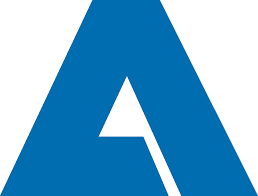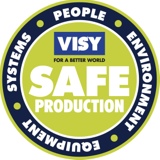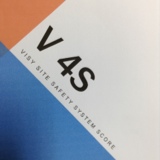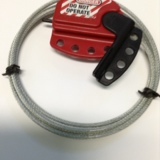Title Page
-
Site conducted
-
Location
-
Conducted on
-
Prepared by
-
Reviewed by
Leadership and Employee Involvement
-
Does site leadership (Director, Production Manager, HSE Manager, Supervisor) know and understand the QHSE Policy(s)?
-
Does the site have a QHSE policy (site specific or corporate issued) generated and posted throughout the facility?
-
Are employees trained to the QHSE policy (site specific or corporate issued) for understanding of the requirements?
-
Is site leadership (Director, Production Manager, HSE Manager, Supervisor) aware of and understand the annual HSE goals?
-
Are the annual safety goals communicated and posted throughout the facility
-
Does the site have a means to track their progress against the HSE goals set by Corporate?
-
Is the site providing adequate HSE resources for the HSE manager or designated representative to perform the role effectively?
-
Does the site have a disciplinary process for HSE violations and documentation for these violation?
-
Do the supervisors and site leadership perform safety stand downs regarding safety incidents and injuries?
-
Does the site have a HSE Action Log that tracks (responsible party, timing for start/completion, priority, review frequency, and the status of each item listed on the log)?
Training and Trainings Records
-
Is site leadership (Director, Production Manager, HSE Manager, Supervisor) participating in HSE meetings and trainings?
-
Does the site have a list or matrix of required safety training for employees (which could be based off of but not limited to: Job Title, area of Work in the Facility, Specific Tasks within a Job Function etc.)?
-
Does the site have a training schedule/matrix to track completion of all required QHSE trainings per employee?
-
Does the site provide competency checks to ensure understanding of the required QHSE training topics?
-
Does the site have records on all trainings completed by each employee in the facility?
-
The site keep certificate records for specialized trainings such as PIT operator, crane operator, PIT/Crane train the trainer etc?
-
Has the site production manager completed OSHA 10 and/or OSHA 30?
-
Has the site safety manager completed OSHA 10 and OSHA 30
Emergency Response
-
Does the site have an emergency response program developed and in place?
-
Has the Emergency Response program been evaluated on an annual basis at the minimum?
-
Has the emergency response program been communicated the employees at a minimum annually or whenever program changes are made.
-
Does site have an emergency alarm system in place (fire alarm, tornado siren etc.) and do employees know what they are 9drills and classroom training at least annually)?
-
Is the emergency alarm system tested at least annually?
-
Does the site have pre-planned evacuation routes and are the on an evacuation map posted throughout out the facility (is the map easily legible from a minimum of 4 feet away?)
-
Has a site risk assessment been completed internally or by a third party, such as insurance or consultant? (non regulatory but should be documented from a risk control aspect every 2-3 years is industry standard)
-
Does the emergency response program cover the requirements for visitors and contractors?
-
Are visitors and contractors trained on the requirements they are expected to follow in the emergency response program?
-
Are emergency drills performed on an annual basis (fire drill, tornado drill, active shooter) and are they documented with areas for improvement?
-
Does the site have an emergency response team, consisting of trained first aid/AED responders (must be a current certification and 1 per 50 employees per shift), and responders trained to use a fire extinguisher (are they listed with contact information provided)?
-
Does the emergency response program list all emergency call numbers for non 911 contacts (gas company, chemical company, utilities etc.) and is it posted?
-
Does the site have its panel of physicians posted in the event of a medical emergency requiring professional medical treatment?
-
are all emergency exit signs and lights lit up, in good repair and tested monthly by the site or a hired third party such as CINTAS?
-
Does the site inspect emergency supply levels (flashlights, blankets, handwarmers, water, safety glasses, hard hats etc.)
-
Does the site perform regular monthly inspections for eye wash stations?
Blood Borne Pathogens
-
Does the site have a Blood Borne Pathogens policy (site specific or corporate issued)?
-
Does the site have adequate amount if 90/10 bleach mixture (or other disinfectant) to clean a traumatic injury.
-
Does the site have documented HBC vaccinations and/or signed HBV vaccination declination forms?
-
Does the site complete annual BBP training to cover BBP disease, symptoms, ways to get infected, misconception about transmission, universal precautions and how to disinfect a soiled surface?
-
Are all site first aid responders trained in Blood Borne Pathogen safety from a 3rd party?
PPE
-
Does the site utilize a hazard assessment to determine it's PPE selection (JHS, Noise Survey, Air Monitoring etc.)?
-
Does the site have a Required PPE matrix per job title based on the JHAs?
-
Are the Required PPE requirements communicated to employees through training, signs, and behavior inspection?
-
Is all required PPE available, in good care and in use throughout the facility by all employees?
-
Does the site monitor PPE use and and review the JHAs to determine of the current PPE is stil sufficient?
-
Does the site have a formal PPE inspection process separate from the JHA reviews?
Incident Investigation
-
Does the site have a formal process and/or program to investigate all incidents (near misses and damage included)?
-
Does the site's Incident investigation process include a required document for collecting facts (meeting the OSHA 301 form requirements) and a requirement for listing/collecting witness statements?
-
Does the sites incident investigation process/program require photos to be taken of the incident scene?
-
Does the sites incident process/program require all incidents to be reported immediately after any incident (24 hours at the most)?
-
Is the site performing detailed root cause analysis (5 whys, fish bone chart etc.) and documenting the process?
-
Does the site derive CA/PA from their root cause analysis, track the CA/PA progress and look for any systemic issues existing within the facility (does the site share findings throughout the network)?
-
Are employees required to participate in the incident/injury investigation process?
-
Are employees held accountable for unsafe acts or acts that are a violation of Legal, Corporate or Site specific regulations, standards or policies?
-
Does the site have a means of tracking all incident investigation generated corrective actions to completion?
Hazard Recognition and Control
-
Does the site have a Job Hazard Analysis process (or something similar) that is completed for all required areas of focus (jobs tasks, machines, process gaps, unusual/abnormal tasks)?
-
Dose the site create CA/PAs from completed JHAs, provide a priority for each CA/PA and communicate the findings of the JHAs to all employees and new hires?
-
Does the site review their JHAs for changes or needed updates?
-
Does the site have a formal Process Hazard Evaluation to assess the entire process for EHS gaps? (non regulatory generally required for insurance of third certification such as ISO)
-
Does the PHE cover: control measures, control of change, new processes, corrective actions? (non regulatory generally required for insurance of third certification such as ISO)
-
Does the site have a Hazard Communication Program/Process/Policy?
-
Does the site have a HazCom requirement for all new chemicals to be reviewed and approved before instruction into the workplace?
-
Are all SDS sheets available and accessible to all employees and up to date with the most current SDS?
-
Are all primary containers properly labeled with the correct GHS labeling?
-
Are all secondary containers properly labeled per the GHS requirements?
-
Are employees aware of the HazCom policy and how to obtain an SDS sheet as well as how to understand GHS labeling?
-
Are GHS posters, posted in conspicuous areas that employees pass by or gather at regularly?
-
Does the site review all evaluations, injury investigations, hazard analysis and daily safety observations for trending data?
-
Do employees at all levels in the facility complete daily safety inspections using Quintec?
Fire Prevention
-
Does the site have an emergency response team that is trained in the use of fire extinguishers, and is there a published roster (does not have to be the same people as the CPR/AED/First Aid team)?
-
Does the emergency response team have a formal list of expectations and the proper equipment/PPE to perform those task (is there a fire brigade on site)?
-
Does the site have proper flammable material control (are flammables properly stored, isolated, segregated, in proper Flam Cabs,) and used according to the SDS?
-
If the flammable cabinet used for colleting/storing RICRA hazardous waste, or to store flammables to be distributed from the cabinet, is the cabinet properly grounded.
-
Does the site have a formal fire extinguisher inspection process?
-
Does site have a formal sprinkler, fire pump and fire riser inspection process?
-
Does the site have a formal water hose (for fire supression use only) inspection process?
-
does the site have a formal water reserve (water tank) inspection process?
Hot Work
-
Does the site have a Hot Work program with a required permitting process, 1-year HWP storage, excluded areas and designated areas that are permitted as such?
-
Is the designated Hot Work area free from flammables and combustibles (35 feet away)?
-
In areas where Hot work will be performed, are combustibles and flammables removed (35 feet away) or covered with flame retardant tarps/covers?
-
are welding screens used for spark/slag control as well as arc flash control (are the screens at least 1.5 feet from the floor for ventilation is possible)?
-
Is proper PPE used while performing hot work? (ask a Hot Work employee to explain what PPE is needed)
Fall Hazards
-
Does the site have work areas and walk way free on slip, trip, and fall hazards (electrical cords, conduit, wet floors, hoses etc?
-
Is the site free from uneven floors in the walkways and working areas?
-
Are all slip, trip and/or fall hazards barricaded or warning signs posted in front of the hazard (wet floor sign, uneven floor sign, high vis tape on conduit etc.)?
-
Is the site in compliance for proper ladder use, and are all ladders in use in good condition (free from damage and other structural defects)?
-
Are all ladders inspected prior to use and is there a formal monthly inspection process for all ladders in use?
-
Do all fixed ladders over 4 feet have a self-closing swing gate or off set landing?
-
Do all fixed ladders over 20 feet have a cage or other form of fall protection to prevent employees from falling backwards off of them (are all fixed ladders leading to restricted areas blocked from unauthorized access)?
-
Does the site have proper fall protection program/process in place for all unprotected edges (including loading docks) and are all employees trained to this standard?
-
For all areas over 4 feet without guard rails, is fall protection offered (harness, lanyard, life line etc.) and is the prescribed fall protection in good condition and inspected annual by a competent person?
-
Does the site perform annual fall protection training, lea by a competent person in fall protection and use of fall protection equipment?
Hearing Conservation
-
Does the site perform a noise survey every three years to determine the time weighted decibel average of every working area?
-
If the site is above 85 Decibels TWA (or the site requires hearing protection regardless of the Db TWA) does the site have a formal written Hearing Conservation program that includes annual audiometric testing?
-
Are all new hires, that will work in a hearing conservation area, given an audiometric test prior to starting work in the hearing conservation area (are all records stored and available for review)?
-
Is appropriately NRR (noise reduction rating) hearing protection offered to employees?
-
Does the site provide hearing protection and hearing conservation training to all employees on an annual basis?
-
Is annal noise spot checking performed (more than annually if new equipment is added that could affect the noise level of a work area)?
Respiratory Protection
-
Does side have a formal respiratory program/process ?
-
Does the sites respiratory program/process list all employees who need a respirator the respirator needed for their area, required annual fit tests, the need to shave facial hair, proper care for respirators, requirement of medical/pulmonary fit testing, work area monitoring, control of changes, voluntary dust mask/respirator use, training/communication?
-
Does the site have records of previous and current medical/pulmonary fit testing, respirator training (to cover use care of respirator and voluntary use)?
-
Does the site perform air monitoring to determine the need for respirators per legal PELs, and to monitor any changes introduced that could lead to the need or removal of respirators in the work environment?
Control of Hazardous Energy (LOTO)
-
Does the site have a formal LOTO program/procedure
-
Does the site equipment specific LOTO procedures that include: machine identification, established sequence of LOTO, location of local disconnect (for each power source and pictures to assist in finding the location) release of residual energy steps?
-
Does site distinguish between authorized and affect individuals?
-
Does the site issue persona locks (able to withstand 50lbs of unlocking force and color coded) as well as a way to identify which lock belons to who (tags or other form of ID are acceptable)?
-
Does site perform authorized LOTO training and Affected LOTO training?
-
Does the site have a shift transition plan for LOTO?
-
Does the site have a lock removal process (determine if employee is still on site or close, machine safe to cut lock review, and signature of all involved to determine and remove lock0/
-
Does the sites LOTO policy provide contractor guidance or controls?
Electrical Safety
-
Do all electrical panels have 36 inches of clearance in front of them with a clear path to access them?
-
Do all panels have identified voltage and Arc flash PPE ratngs?
-
Do all panels have the proper labeling for all breakers and panels with regard to which machine and equipment they power?
-
Are all panel doors closed and no openings/gaps present
-
Are all electrical cords and plugs in good condition 9free from damage or exposed wires)?
-
Is the site in compliance for using extension cords for temporary use only (>90 days equals temporary use)?
-
Is the site free from daisy change and high voltage items plugged into surge protectors?
-
GFCI outlets on external outlets or near areas that can get wet?
-
Are outlets, switches and junction boxes free from damage, covers intact and no exposed wires?
Confined Space Safety
-
Does the site have a confined space policy (covering confined space and permit required confined spaced definitions, permitting, how to detect hazardous conditions, acceptable enrty conditions, purging hazardous conditions, roles, rescue plan and contractors)?
-
Does the site have a matrix of all confined spaces and which are permit required?
-
Does the site have a confined space permitting process?
-
Does the site have a confined space rescue plan?
Machinery and Guarding
-
Does the site have all machine/equipment hazards ad points of operation property guarded? Items to look for: drill press, pumps, conveyors, rotating shafts (longer than radius of unsmooth), belts, pulls, hydraulic presses. sprockets, chains, chucks, saws, fans, bench/standing grinders etc.)
-
Does the site have pressure reducing valves on air guns (> 30 PSI)
-
Is all fixed equipment properly anchored in place?
-
Are all emergency stops, labeled functional and in good condition?
-
are all E-Stop cables highlighted red, functional, easy to access and in good condition?
-
Do all hydraulic presses, powered guillotines and other similar equipment require two handed operation?
-
Does the site regularlarly inspect and maintain all e-stops and e-stop cords?
-
Does the site perform inspections pressure vessels, boilers, waters towers and other hazardous containers?
-
is all equipment sunject to regular PMs and is safety aspects for the equipment part of the PM checklist?
Safety Committee
-
Does the site have a safety committee that meets every month, is voluntary?
-
Are safety committee meeting minutes posted?
-
Does the safety committee have an action log separate from the meeting minutes that is shared (are these items tracked to completion)?
-
Is the safety committee comprised of hourly associates across all departments/shifts and are participating voluntarily.
-
Does the site safety committee perform area inspections or participate/help with any of the routine safety inspections?
Safety Inspections
-
Does the site have a structured safety observation system for safety observation (hazards, unsafe behaviors and positive/best practices)?
-
Does the site perform regular safety inspections (what is the frequency, who is responsible and are inspections communicated)?
-
Does the site conduct executive safety tours (Director, PM, Corporate representative) quarterly?
-
Is the site utilizing Quentic for employee observations (1 observation per employee per calendar year)?
Cranes
-
Are all operators trained in crane operation?
-
Are all cranes inspected prior to use by the operator and on a PM inspection list for maintenance? (how are pre-use inspections documented)
-
Are all cranes set up for a third party evaluation by an outside contractor (to inspect the entire crane system: hoist, chain, block, hook, track/rail, drum, controls etc.)?
-
Are all crane trainers a cpmpetent person and have they completed a Train-the-Trainer course to be the competent person?
-
Are capacities listed and legible on all cranes, hoists and slings?
Powered Industrial Truck /Aerial Lift and Warehouseare rack
-
Does the site have certified PIT Operators (are their certifications active and completed under Andritz)?
-
are internal PIT operators trainers certified as Train-the-Trainer from a third party source?
-
Are employees certified to the class of PIT they will or do operate and are they retrained for new classes of PIT they must operate if introduced to the work environment?
-
Are any operators involved in an accident or seen perform unsafe operations with a PIT removed from PIT Operations or recertified?
-
Do PIT operators operate in a safe manner for their environment?
-
Are all PIT inspected prior to use (if 24/7 operation it must be done before each shift, if 8/5 must be done once a day before operation)?
-
Are all aerial lift operators certified by Andritz?
-
Is the aerial lift platform free from trip hazards, does the swing gate work, are controls labeled/legible, is the operator manual present and are guard rails in good condition?
-
Are racks labeled with their capacities and are they legible?
-
Are racks guarded against damage PIT strikes using end cap guards?
Environmental Compliance
-
Is the site in compliance for storage of universal waste?
-
Is the site compliant for HazWaste storage (what is their generator status)?
-
Does the site operate under a stormwater permit or stormwater exemption?
-
Does the site have an Air permit (type and tracking/reporting requirements)?
-
Does the site operate under an SPCC?
Contractor and Visitor safety
-
Does the site have a contractor orientation process that covers the following: evacuation routes, assembly area, PPE requirements, assigned escort(s) if needed, competency, safety systems requirements and emergency protocals for tem (is there an annual refresher for routine contractors?
-
Does the site perform regular contractor audits while they are on site performing work and assign a responsible person to monitor them?
-
Does the site complete pre-job assessments and JHAs before projects start?
-
Does the site collect all Certificate of Insurance, applicable certificate/licenses, SDS for material they bring for each contractor?
-
Is their a visitor program/orientation that covers evacuation routes, assembly areas, PPE requirements (is there an annal refresher for routine visitors)?
-
Are visitors escorted through the facility at all times (not including Andritz visitors)?
OSHA Logs
-
Does the site have previous 5 years of OSHA logs available for review?
-
Is the OSHA 300(a) signed and properly completed?
-
Are the OSHA 300 logs filled out completely and properly?
-
Are OSHA 300(a) logs signed and posted from 2/1-4/30 every year?
Regulatory Visits
-
Has the facility had any regulatory visits in the last 12 months?
-
Does the site have a designated representative to meet with the regulatory agency?
-
Were any citations noted and have they been completed within the time frame provided?
Open questions not listed in the audit.
-
Open
-
Open
-
open
-
Open
-
open













